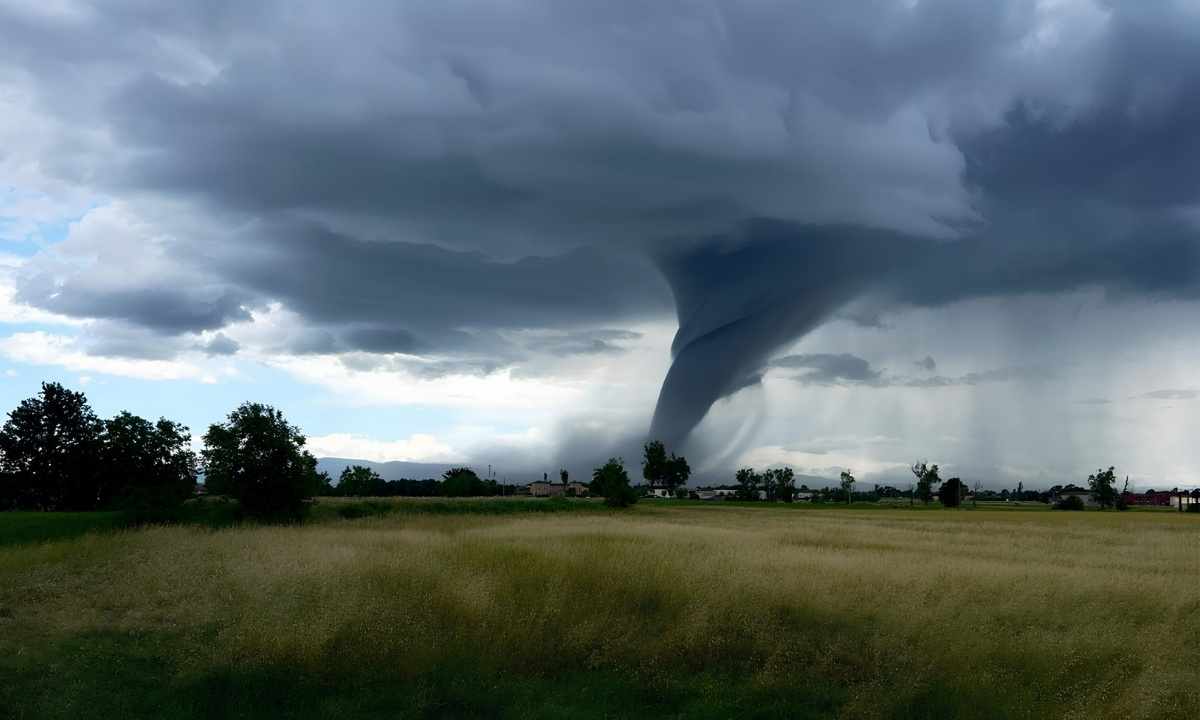
Ever wondered about the difference between a tornado warning and a tornado watch? Knowing this can be a lifesaver. A tornado watch means conditions are right for tornadoes to form. Think of it as a heads-up to stay alert. On the other hand, a tornado warning means a tornado has been spotted or indicated by weather radar. This is your cue to take immediate action and find shelter. Understanding these terms can help you stay safe during severe weather. Let's break down the key differences and what actions you should take for each.
Tornado Warning vs. Watch: What's the Difference?
Understanding the difference between a tornado warning and a tornado watch can be life-saving. Both terms are used by meteorologists to alert the public about potential tornado threats, but they mean very different things. Let's break down the key differences.
Definition and Purpose
Knowing the definitions and purposes of these alerts is crucial for safety.
-
Tornado Watch: Issued when weather conditions are favorable for the formation of tornadoes. It means that tornadoes are possible in and near the watch area. Stay alert and be prepared to take action.
-
Tornado Warning: Issued when a tornado has been sighted or indicated by weather radar. It means that a tornado is occurring or imminent. Take immediate action to find shelter.
Duration and Coverage Area
The time frame and area covered by these alerts can vary significantly.
-
Tornado Watch Duration: Typically lasts for several hours, often up to 8 hours. It covers a large area, sometimes multiple counties or even states, to account for the potential development of tornadoes.
-
Tornado Warning Duration: Usually lasts for a much shorter period, often 30 minutes to an hour. It covers a smaller, more specific area, such as parts of a county or a single town, where a tornado has been detected.
Issuing Authorities
Different organizations are responsible for issuing these alerts.
-
Tornado Watch Issuer: The Storm Prediction Center (SPC) is responsible for issuing tornado watches. They monitor large-scale weather patterns and predict areas where tornadoes might form.
-
Tornado Warning Issuer: Local National Weather Service (NWS) offices issue tornado warnings. They use radar and other tools to detect tornadoes and provide localized alerts.
Public Response
How the public should respond to each alert varies.
-
Response to Tornado Watch: Stay informed by monitoring weather updates. Make sure you have a plan and know where to take shelter if a warning is issued. Keep an eye on the sky for changing weather conditions.
-
Response to Tornado Warning: Take immediate action to find shelter. Go to a basement or an interior room on the lowest floor of a sturdy building. Avoid windows and cover yourself with a mattress or heavy blankets if possible.
Technological Tools
Different tools and technologies are used to detect and predict tornadoes.
-
Tools for Tornado Watch: Meteorologists use satellite imagery, weather models, and atmospheric data to predict conditions favorable for tornadoes. These tools help identify large areas at risk.
-
Tools for Tornado Warning: Doppler radar is the primary tool for detecting tornadoes. It can identify rotation in a storm, which indicates a tornado may be forming or already on the ground. Spotters and emergency services also provide real-time reports.
Understanding the Key Differences
Knowing the differences between a tornado warning and a tornado watch can save lives. A tornado watch means conditions are right for a tornado to form, so stay alert and be ready to act. A tornado warning means a tornado has been spotted or indicated by radar, and you need to take cover immediately.
Having a plan in place for both scenarios is essential. Keep a weather radio handy, know your safe spots, and stay informed. Remember, a watch is about preparation, while a warning is about immediate action.
By understanding these distinctions, you can better protect yourself and your loved ones during severe weather. Stay safe, stay informed, and always be prepared.
Was this page helpful?
Our commitment to delivering trustworthy and engaging content is at the heart of what we do. Each fact on our site is contributed by real users like you, bringing a wealth of diverse insights and information. To ensure the highest standards of accuracy and reliability, our dedicated editors meticulously review each submission. This process guarantees that the facts we share are not only fascinating but also credible. Trust in our commitment to quality and authenticity as you explore and learn with us.
